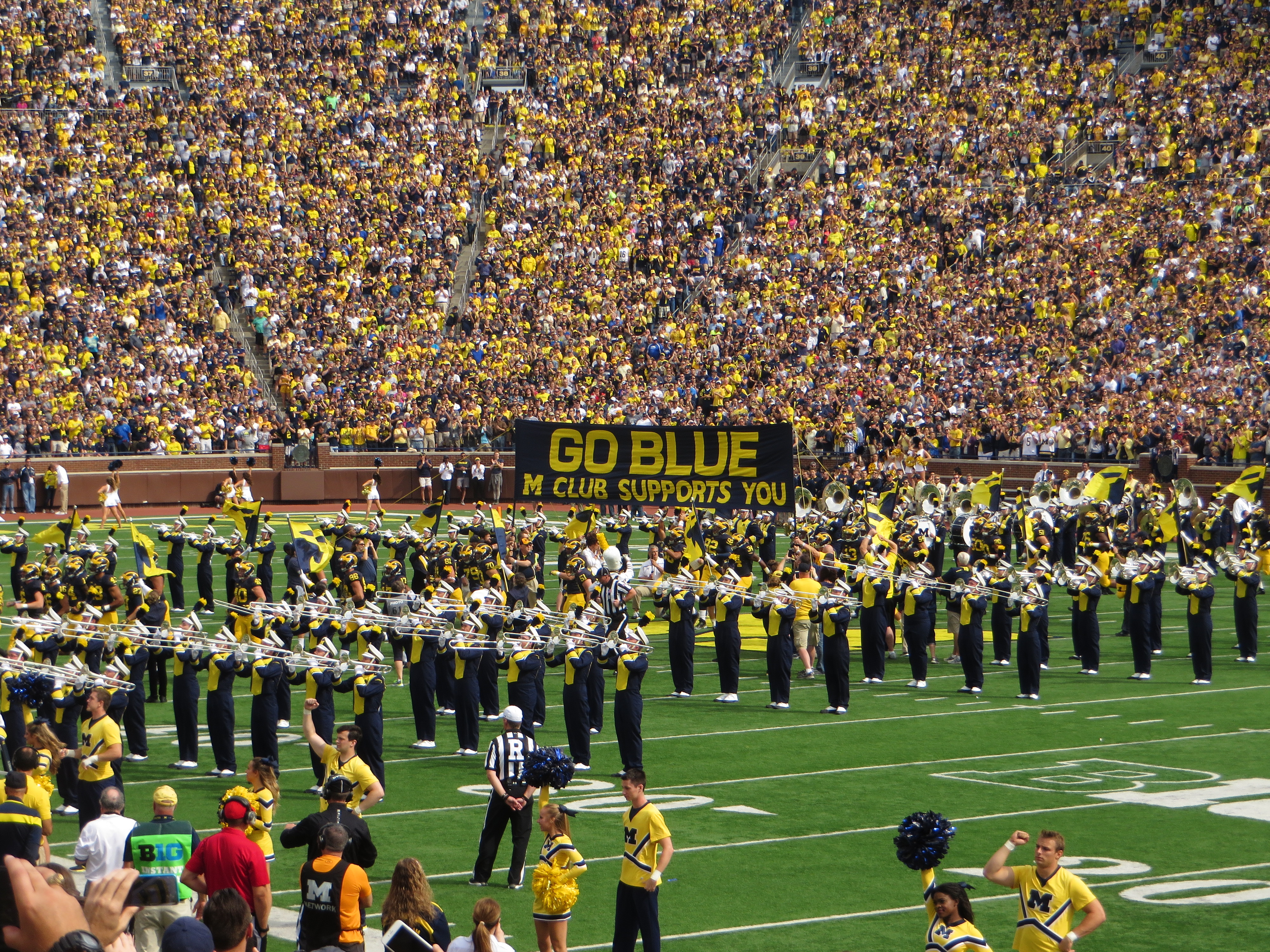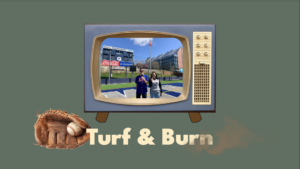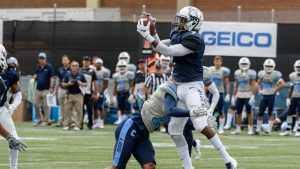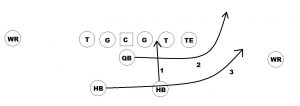On Oct. 30, 2022, the sports world got another reminder of how sports, at their lowest, can bring out the worst in players, coaches, and especially fans.
After falling to their rivals, the Michigan Wolverines, the Michigan State Spartans’ football team walked back towards the visiting locker room with their heads hanging low in what should have been a calm and somber moment. Seen in the now infamous ESPN tunnel camera video footage, violence erupted between multiple Spartans and a pair of Wolverine players. Shoves, punches, and even a helmet swing are clearly visible in both that video and other footage. It’s not clear who the instigator of the fight was from the videos that have since been released. However, the initial punishments for the incident included eight suspended Spartans, multiple legal hearings and one police investigation.
Since then, seven of the eight have seen their suspensions end at the behest of the Big Ten Conference. Still, six of those seven now face ongoing court cases after being charged with misdemeanors. The seventh, Khary Crump, has been hit with an eight-game suspension for next season and faced felony charges that were later dismissed in exchange for probation and community service. In a Big Ten statement, the Michigan football program was publicly reprimanded because they did not “provide adequate protection for personnel of both home and visiting teams when entering and leaving playing arenas.” Additionally, the conference said that “members of both teams did not represent the level of sportsmanship that is expected from the Big Ten Conference and its member institutions.” According to conference rules, a public reprimand is given to a program on either its second or third violation of league policy.
While there are still ongoing court cases, here is a short summary of what is being alleged by each side: Tom Mars, attorney of injured Wolverine Gemon Green, described the incident as MSU players “brutally beating” Green in a press statement. Mars specifically pointed out MSU corner Khary Crump, who can be clearly seen swinging his helmet at Green during the fight.
From the Michigan State side, attorney David Diamond, representing the suspended Spartan players, alleged in his own press release that “a Michigan football player engaged with Spartan athletes with his helmet and swinging a punch.” Diamond also pointed to a later incident where MSU players were boarding their team bus and “a relative of a Michigan player jumped over and through security to approach and confront a MSU player [Maliq Carr].” This incident was not released by ESPN or the Big Ten; instead, it was leaked by Carr’s mother on Twitter. It should be noted that Carr’s potential involvement in the fight was not seen in any footage, and he has not been suspended. It should also be noted that despite both sides pointing to “evidence” that the other team started the fight, the public has yet to see footage that solidly corroborates either group’s claims.
At this point, the blame has been squarely placed on players, coaches, and tunnel security. However, neither team’s fan base has taken on any blame–even though they are partially at fault in this situation. What happened in that tunnel is a perfect example of how we, as sports fans, create our own demons.
For context, “Hate Week” is the not-so-affectionate name given to the week preceding the Michigan-MSU football game every year. During this week, each side’s fans will air grievances and negative feelings about their opponent—“bad” officiating calls from games years ago, brags about series history, and more. Most of it is harmless. The issue is the “and more,” and the tunnel altercation is an excellent case study of that.
Both fan bases’ reactions to the incident were widespread, and beat writers have made a point of making their feelings known. To say that the response has been respectful and controlled would be like saying that the 2021-22 and 2022-23 Georgetown men’s basketball teams were great at basketball.
For instance, in the ESPN tunnel footage, MSU captain and starting safety Xavier Henderson can be clearly seen ushering his teammates into the Spartan locker room to mitigate the fighting. Most certainly a responsible response. Certainly sounds like someone who, if nothing else, should be commended for his level-headedness in a stressful situation. Someone should probably inform some members of the Michigan fan base of that, because if you took a stroll over to Henderson’s Instagram at the time, you’d have noticed that none of his posts had comments anymore. While no statement has been put out by Henderson, after seeing some of the things that “fans” were flooding his comments with after the incident, his reasoning for this feels clear. Possibly worse, what happened with Henderson is one of the few things that I am comfortable referencing–many of the other reactions have been much, much worse.
The Michigan State fan base does not have clean hands in this either. Some “fans” have said on the Internet that punishing the Spartan players involved is nonsensical, pointing to incidents where Myles Garrett and Aaron Donald also violently struck a player with their helmet and received no legal punishment, despite the danger of the action, seen in Mason Rudolph’s resulting injury from the Garrett incident.
How can we, as reasonable people and as fans, pour all of this hate into college kids and expect them to act rationally in the face of extreme emotional stimuli, like a stadium of 100,000-plus yelling at them?
It isn’t just football, and it isn’t just college sports, either; allow me to share an anecdote. The last college ice hockey game I attended, coincidentally, was a Michigan-MSU men’s game. Interspersed between the standard “Go-Blue” and “D-Fence” chants were other less savory ones. Whenever the Spartan goalie would take his helmet off, the Michigan student section would relentlessly chant “Ug-ly Goal-ie” until he put his helmet back on–then they would cheer. A period later, when they got bored of that, they turned their attention to the visitors’ parent section and yelled, “Ug-ly Par-ents.” While surely many thought the chants were all in good fun, they had nothing to with the game; instead, they were personal, and potentially hurtful.
Of course, fans do not always derive their hate and disgust from thin air, and that should be acknowledged. Sometimes, fan narratives originate from team beat writers, or even worse, from teams themselves. For instance, take Michigan football head coach Jim Harbaugh and his response to the incident in his weekly press conference the day after the brawl.
Harbaugh spoke on many things in the press conference, but the main focus was on what had transpired in the tunnel following the previous day’s game. Regarding what he had seen from the video footage available at the time, Harbaugh said, “It’s clear what transpired. It seems very open and shut.” He was so confident that in his opening statement, he said that, “an apology will not get the job done in this instance,” and that the Spartans involved should face “serious consequences.” It is pretty clear that Harbaugh’s claims of “open and shut” were at least a bit of hyperbole; if the video was so cut-and-dry, then why did it take a full two weeks for the investigation of the less-than-sixty-second fight to conclude?
Jim Harbaugh is a 58-year-old white man who makes over seven million dollars a year. He has no policing or criminal justice expertise, and is the leader of a massive, incredibly passionate and outraged fan base.
His statements are those of an understandably upset coach who is trying to do right by his players. But when you’re a person of Harbaugh’s stature, you have to have situational awareness. You need to be aware of the context of your comments and the way in which people will take your words. Calling for the significant punishment of a group of young Black men during an ongoing police investigation from his national platform during a press conference is either one of the most dangerously ignorant mistakes or one of the most intentionally unethical agenda pushes I’ve seen in a long time
In that moment, he empowered a small subset of the Michigan fanbase to express their unbridled racist views, and the proof is in the pudding. Take the Xavier Henderson incident. Take the comments under posts of suspended senior safety Angelo Grose, MSU Head Coach Mel Tucker, uncommitted MSU target recruit David Stone, and many others. Tucker even needed a police presence at his weekly radio show after reportedly receiving an abundance of death threats. Many of these athletes are still teenagers, much younger than those screaming racist abuse at them. In my experience, this event isn’t an outlier, either.
When I was younger, I played hockey, and as a player of color, even as a child, I experienced some of this hate. From elementary school on, I was the subject of a variety of differential treatment, name-calling, and social ostracization. When I was 14 years old, my coach threatened to eject any players who refused to stand for the national anthem while looking directly at me. I quit after eight years of playing due in large part to the comments and looks I received while playing. I was only 15.
For context, I played in a city supposedly known for its openness and understanding, its intelligence and inclusion: Ann Arbor, Michigan, the same city that houses the University of Michigan. When I was in high school and I had track meets against our rival school in Saline, my mother would have that uncomfortable conversation that parents of children of color are all-too-familiar-with, where she would tell me to be safe and smart because there were going to be people there who were going to treat me poorly because of my race. Saline, Michigan is less than a ten-minute drive from Michigan’s football stadium.
That isn’t to say that Ann Arbor is a dangerous place, or that the Michigan fanbase is filled with horrendous individuals. What it does show is that even coaches in hyper-educated urban communities need to be careful of what they say and how they say it, because they are not immune from the systemic forms of oppression that exist in society either. Hatred in sports is a widespread infection across state lines, age, race, leagues, and just about any other distinctions one can think of. Hate can even be targeted at a fanbase’s own players. Take Blake O’Neill, a Michigan punter who was beloved until a poor play call and a bad snap sent him into infamy and out of football entirely amidst death threats from those who used to cheer his name. Those threats came directly after Harbaugh all but threw O’Neill under the bus for what happened. In that press conference in regards to that ill fated play, Harbaugh said, “He [O’Neill] didn’t field it cleanly, and looked like then he bobbled it again and kind of kicked it a little bit. Looked like he was trying to kick it while he was in traffic. I mean, you saw it.”
What Harbaugh conveniently left out of that discussion though, is how despite MSU lining up with 10 players on the line of scrimmage to block the punt and another on the line near the sideline with nobody back to return the kick, Harbaugh sent only eight of a possible 10 of his players (the punter being player 11) to block the MSU special teams, and of those only six were devoted lockers, the other two only gave chip-blocks before running downfield. This poor play calling and ensuing confusion by the Wolverine line led to a staggering four Spartan players having a virtually unabated path to O’Neill. The play was doomed from that first bobble, and it’s unclear even minus the mishandle if he would’ve gotten the punt off unscathed. But you’d never hear Harbaugh take accountability for it.
To athletes’ credit, brawls like the sporting world saw in the Michigan tunnel are exceedingly rare. The vast majority of the time, athletes keep their cool. As the sports world saw in the Michigan tunnel though, when things do go wrong, they can get ugly in a hurry.
While those watching cannot control everything that happens on and off the field, fans need to remember that the athletes they are cheering for are real people, not commodities who exist purely for entertainment. In the lead-up to emotionally charged rivalry games like Michigan-MSU, keeping this in mind is especially important. The outpouring of hate from both sides following that Saturday’s events is wholly unacceptable and disgusting–and yet despite that, they caught absolutely nobody by surprise.






Sports, just like any other competetive activity, are inheritly full of agression, be it subdued one or, as in this case, open one. It’s only natural for humans to feel spite in the moment when a lot of time and effort you’ve put down suddenly wasn’t enough(I can definitely talk for myself since I’ve lost numerous shooting tournaments at Gritrsports range myself). After all, it all comes down to if you’re going to be a higher man AFTER all of those feelings happen.